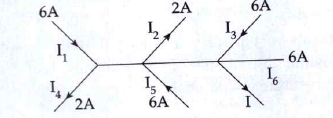A Galvanometer has a resistance of 40 D and a current of 4 mA is needed for a full scale deflection. What is the resistance and how is it to be connected to convert the galvanometer:- into an ammeter of 0.4 A range andSolution in Marathi
Step by step video & image solution for A Galvanometer has a resistance of 40 D and a current of 4 mA is needed for a full scale deflection. What is the resistance and how is it to be connected to convert the galvanometer:- into an ammeter of 0.4 A range and by Physics experts to help you in doubts & scoring excellent marks in Class 12 exams.
Updated on:21/07/2023Topper's Solved these Questions
- Current ElectricityBOOK - CHETANA PUBLICATIONCHAPTER - Current ElectricityEXERCISE - Exercise
92 Videos
- AC CIRCUITSBOOK - CHETANA PUBLICATIONCHAPTER - AC CIRCUITSEXERCISE - Exercise
122 Videos
- Dual Nature of Radiation and MatterBOOK - CHETANA PUBLICATIONCHAPTER - Dual Nature of Radiation and MatterEXERCISE - EXERCISE
89 Videos
Similar Questions
(1)In the following circuit, calculate the value of the current (I).

View SolutionA LCR series circuit has the impedance of 240 ohm. If R = 120Ω, find the power factor of the circuit.
View SolutionDetermine frequency and wavelength of a photon having energy 1.3eW.
View SolutionA galvanometer has a resistance of 30Omega and a current of 2 mA is needed to give full scale deflection. What is the resistance needed and how is it to be connected to convert the galvanometer (i) into an ammeter of 0.3 A range and (ii) into a voltmeter of 0.2 V range?
View Solution(a) Briefly explain how a galvanometer is converted into an ammeter.
(b) A galvanometer coil has a resistance of 15Ω and it shows full scale deflection for a current of 4 mA. Convert it into an ammeter of range 0 to 6 A.
View SolutionA galvanometer has a resistance of 30 ohm and a current of 2 mA is needed to give a full scale deflection. What is the resistance needed and how is it to be connected to convert this galvanometer
(a) Into an ammeter of 0.3 A range ?
(b) Into a volmeter of 0.2 V range ?
View SolutionA galvanometer of resistance 15Ω gives full scale deflection for a current of 2mA. Calculate the shunt resistance needed to convert it into an ammeter of range 0 to 5A.
View SolutionWhat is the value of shunt resistance required to convert a galvanometer of resistance 100Ω into an ammeter of range 1A ? (Given : Full scale deflection of the galvanometer is 5 mA.)
View SolutionA galvanometer of resistance 99 Ω requires 5 mA current for full scale deflection. It can be converted into an ammeter of range 0.5 A by connecting a shunt resistance of
View SolutionA galvanometer of resistance 50Ω is converted into an ammeter by connecting a low resistance (shunt) of value 1Ω in parallel to the galvanometer, S. If full - scale deflection current of the galvanometer is 10 mA, then the maximum current that can be measured by the ammeter is -
View SolutionWhat is the value of shunt resistance required to convert a galvanometer of resistance 100 Omega into an ammeter of range 1 A ? Given: Full scale deflection of the galvanometer is 5 mA.
View Solution(a) Briefly explain how a galvanometer is converted into an ammeter.
(b) A galvanometer coil has a resistance of 15Ω and it shows full scale deflection for a current of 4 mA. Convert it into an ammeter of range 0 to 6 A.
View SolutionWhat is the value of shunt resistance required to convert a galvanometer of resistance 100Ω into an ammeter of range 1A ? (Given : Full scale deflection of the galvanometer is 5 mA.)
View SolutionA galvanometer of resistance 99 Ω requires 5 mA current for full scale deflection. It can be converted into an ammeter of range 0.5 A by connecting a shunt resistance of
View SolutionA galvanometer with a resistance of 75Omega produces a full scale deflection with a current of 5 mA. How can this galvanometer be converted into an ammeter which has a range of 0-5A?
View SolutionA galvanometer with a resistance of 75Ω produces a full scale deflection with a current of 5 mA. How can this galvanometer be converted into an ammeter which has a range of 0-5A?
View Solution
